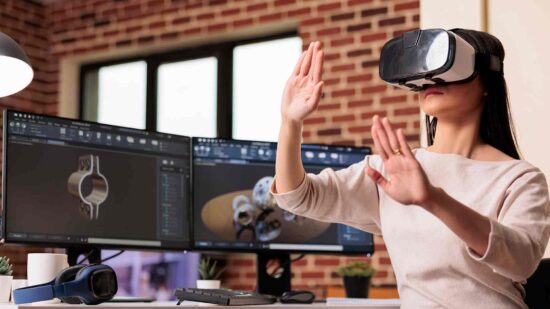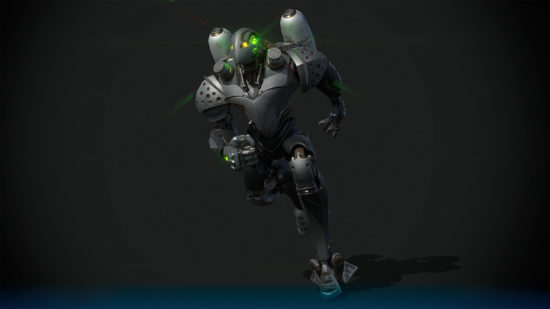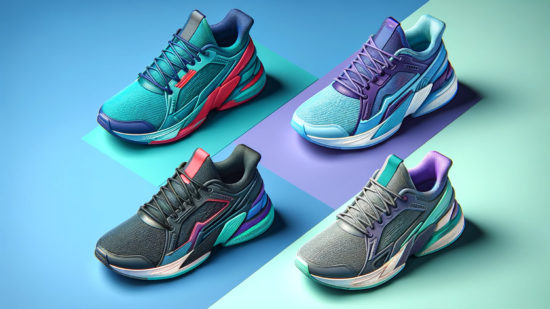The battle for customer attention is going on, and every brand is trying to figure out the best strategy. Integrating 3D modeling services in presentations has emerged as a potent tool for making complex data and ideas more digestible and engaging. When it comes to the fashion and retail sector, utilizing clothing 3D models can significantly enhance the visual appeal and understanding of your product line.
By employing high-quality 3D models, businesses can provide a more immersive experience, allowing stakeholders to virtually touch, rotate, and interact with the clothing items being presented. This not only enriches the audience’s understanding but also creates a memorable impression that could lead to more favorable business outcomes. As 3D modeling technology continues to evolve, so does the opportunity to create more compelling and informative presentations.
Through a detailed exploration, we will uncover how incorporating clothing 3D models can be a game-changer for your business presentations and the avenues through which you can procure these services.
Importance of Visual Appeal in Business Presentations

Visual appeal holds a pivotal role in the effectiveness of business presentations. It’s not merely about aesthetic allure but about encapsulating complex ideas in an accessible and engaging manner. In an era where audiences are inundated with information, standing out with visually stimulating presentations is crucial. What is 3D modeling used for? It’s utilized for crafting realistic, detailed representations of objects, which, in the context of business presentations, provides a more precise, more engaging depiction of products or concepts.
In fashion and retail, where the tactile experience of materials is so central, 3D modeling services offer a bridge to a more interactive and visually rich presentation format. Employing clothing 3D models enables a tangible, almost real-world exploration of fabric textures, designs, and fit. It allows visual storytelling that traditional photography or sketches can’t match, offering a dynamic, interactive experience.
Moreover, 3D models are adaptable to various digital platforms, enhancing consistency in how the product is presented across different mediums. They also provide a level of interactivity that can be tailored to suit the specific needs and interests of the audience, fostering a deeper connection between the viewer and the product. This visual engagement, powered by 3D modeling, not only enriches the audience’s comprehension but also contributes to a more compelling and persuasive business presentation.
Advantages of Utilizing Clothing 3D Models
Incorporating 3D models of clothing in your presentations can bridge the gap between imagination and reality. Now let’s highlight the benefits that come along with this modern representation technique.
Realism and Detailing
In 3D art development, the push towards realism and detailing remains paramount. Artists and developers prioritize intricate details, ensuring every texture, shadow, and reflection mirrors reality. As technologies evolve, so does the intricacy of styles for 3D art development
Similar styles emphasize not just realism but the nuance and granularity that can differentiate a generic model from a lifelike representation. Capturing the nuances of real-life elements, artists are continually refining their techniques. With advanced software and tools, the lines between the virtual and real blur setting new standards for what’s achievable in 3D art.
Interactive Engagement
Engaging users through 3D art isn’t just about aesthetics — it’s about interaction. The interactive components of 3D creations captivate audiences, allowing them to feel connected and immersed. Advanced tools in 3D art development have paved the way for dynamic environments where users can interact, explore, and even influence outcomes.
These dynamic scenarios elevate user experience, turning passive observers into active participants. As artists incorporate more interactive elements, audiences not only appreciate the visual treat but also experience stories in a tactile, memorable way. Thus, by blending interactivity with aesthetics, 3D artists achieve a deeper, more resonant connection with their audiences.
Cost Efficiency
In the 3D art sector, cost efficiency is pivotal in project decisions. Balancing quality with budget constraints requires savvy planning and judicious resource allocation. Advanced tools and software have revolutionized the cost structure, enabling artists to produce high-quality work without exorbitant expenses.
Open-source platforms and collaborative techniques further drive down costs. By optimizing workflows and tapping into cost-effective resources, 3D artists can deliver exceptional artistry while maintaining budgetary discipline. As a result, even projects with limited funds can now access top-tier 3D art solutions while maintaining quality.
Applications in Different Business Domains

From fashion e-commerce platforms showcasing virtual try-ons to gaming industries creating immersive character wardrobes, these 3D models redefine user experiences. Their adaptability not only enhances visual representation but also streamlines design and production processes in the apparel sector.
Fashion and Retail
Fusing 3D technology with fashion and retail has led to transformative experiences for consumers and brands alike. Virtual try-ons allow customers to visualize outfits on avatars, reducing return rates and enhancing online shopping experiences. Brands harness 3D modeling to prototype designs, accelerating the product development cycle.
In-store, augmented reality mirrors give a futuristic edge to traditional retail, allowing instantaneous virtual wardrobe changes. The shift toward a more digital, immersive shopping environment not only caters to the modern consumer’s demand for innovation but also offers brands a competitive edge in a rapidly evolving market.
Advertising and Marketing
3D technology’s integration into advertising and marketing amplifies brand messages, capturing audience attention in unparalleled ways. Dynamic 3D animations breathe life into product showcases, making them more memorable and engaging. Interactive 3D ads enable consumers to explore products in detail, fostering more profound connections.
Virtual environments create immersive experiences, allowing brands to craft narrative-driven campaigns that resonate. The added depth and dimension offer marketers a canvas to visualize concepts previously restricted to 2D spaces. By harnessing the power of 3D technology, advertisers elevate their storytelling, driving higher engagement and fostering more meaningful interactions with their target demographics.
E-Commerce
3D technology has ushered in a transformative era for e-commerce. Virtual product displays allow consumers to rotate, zoom, and inspect items closely, replicating the tactile feel of brick-and-mortar shopping. Enhanced visualization reduces uncertainties, leading to informed purchasing decisions and diminished return rates.
Furthermore, augmented reality features let users visualize products in their real environments, be it furniture in living spaces or accessories on personal avatars. Such immersive shopping experiences bolster customer trust and satisfaction. By integrating 3D capabilities, e-commerce platforms cater to evolving consumer expectations, creating seamless bridges between the digital and physical shopping realms.
Creating Your Own Clothing 3D Models
The journey from conceptualization to the creation of 3D models is laden with creativity and technical knowledge. Mastering the techniques on how to make realistic 3D models is essential for artists aiming to achieve lifelike representations in their digital creations. So let’s break down the process of creating clothing 3D models for your business presentations.
Choosing the Right Software
- Compatibility. Ensure the software aligns with your hardware specifications to prevent glitches or performance issues.
- Functionality. Identify tools that provide features tailored to your project’s needs, whether intricate detailing or broad design overviews.
- Skill level. Opt for software that matches your proficiency, considering there are options for beginners and experts.
- Budget. While some high-end software can be pricey, there are cost-effective and even open-source alternatives that offer robust capabilities.
- Support and community. A strong user community and responsive support can be invaluable for troubleshooting and learning advanced techniques.
- Updates and longevity. Prioritize software that receives regular updates, ensuring longevity and adaptability to industry changes.
Designing and Modeling
Navigating the various types of 3D modeling demands a systematic approach that emphasizes artistry and technical prowess.
- Research. Before starting, gather references and inspiration to guide your modeling process, ensuring authenticity and precision.
- Sketching. Draft initial concepts using 2D sketches; this foundational step helps visualize the final 3D model’s structure.
- Topology. Emphasize clean topology, as a well-structured mesh ensures better deformations and smoother rendering.
- Detailing. Utilize tools and techniques like sculpting or bump maps to add intricate details, enhancing the model’s realism.
- Scaling. Ensure your model adheres to real-world proportions, maintaining consistency and believability.
- Materials and textures. Select appropriate shaders and textures to imbue your model with lifelike qualities, from reflectivity to transparency.
- Optimization. Especially crucial for game or VR modeling, optimize meshes for performance without compromising visual appeal.
- Feedback. Collaborate and seek feedback from peers or clients, as fresh perspectives can spotlight overlooked areas or suggest improvements.
- Iteration. Continually refine and adjust based on feedback, ensuring the model meets desired standards and objectives.
- Finalization. After thorough reviews, finalize your model, ensuring all elements are correctly integrated and prepared for rendering or other outputs.
Armed with these steps and a clear understanding of the different types of 3D modeling, artists can craft detailed, realistic, and efficient models tailored to specific project needs.
Texturing and Coloring
Achieving lifelike representations in 3D models requires an in-depth focus on texturing and coloring, which bring depth and realism to any creation.
- UV mapping. Properly unwrap and lay out your model’s UVs, ensuring textures fit seamlessly and without distortion.
- Texture choice. Decide between bitmaps or procedural textures based on the project’s needs and the desired level of detail.
- Resolution. Select the appropriate texture resolution, balancing quality with performance, especially for real-time applications.
- Layering. Use multiple texture layers, like diffuse, specular, and normal maps, to achieve complex surface properties.
- Color theory. Apply foundational principles of color theory to create harmonious and impactful palettes.
- Subsurface scattering. For organic materials, incorporate subsurface scattering to achieve realistic light interactions.
- Bump and displacement. Implement these techniques to simulate detailed surfaces without adding geometry.
- Reflection and refraction. Adjust these settings to make materials like glass or water appear realistic.
- Seamlessness. For repetitive textures, ensure they tile without visible seams, preserving immersion.
- Testing. Continually render test shots to evaluate texture and color under various lighting conditions.
- Feedback loop. Engage in iterative processes, making adjustments based on peer reviews or real-world observations.
With a comprehensive approach to texturing and coloring, artists can enhance the visual richness of their 3D models, making them more engaging and true-to-life.
Incorporating 3D Models into Business Presentations
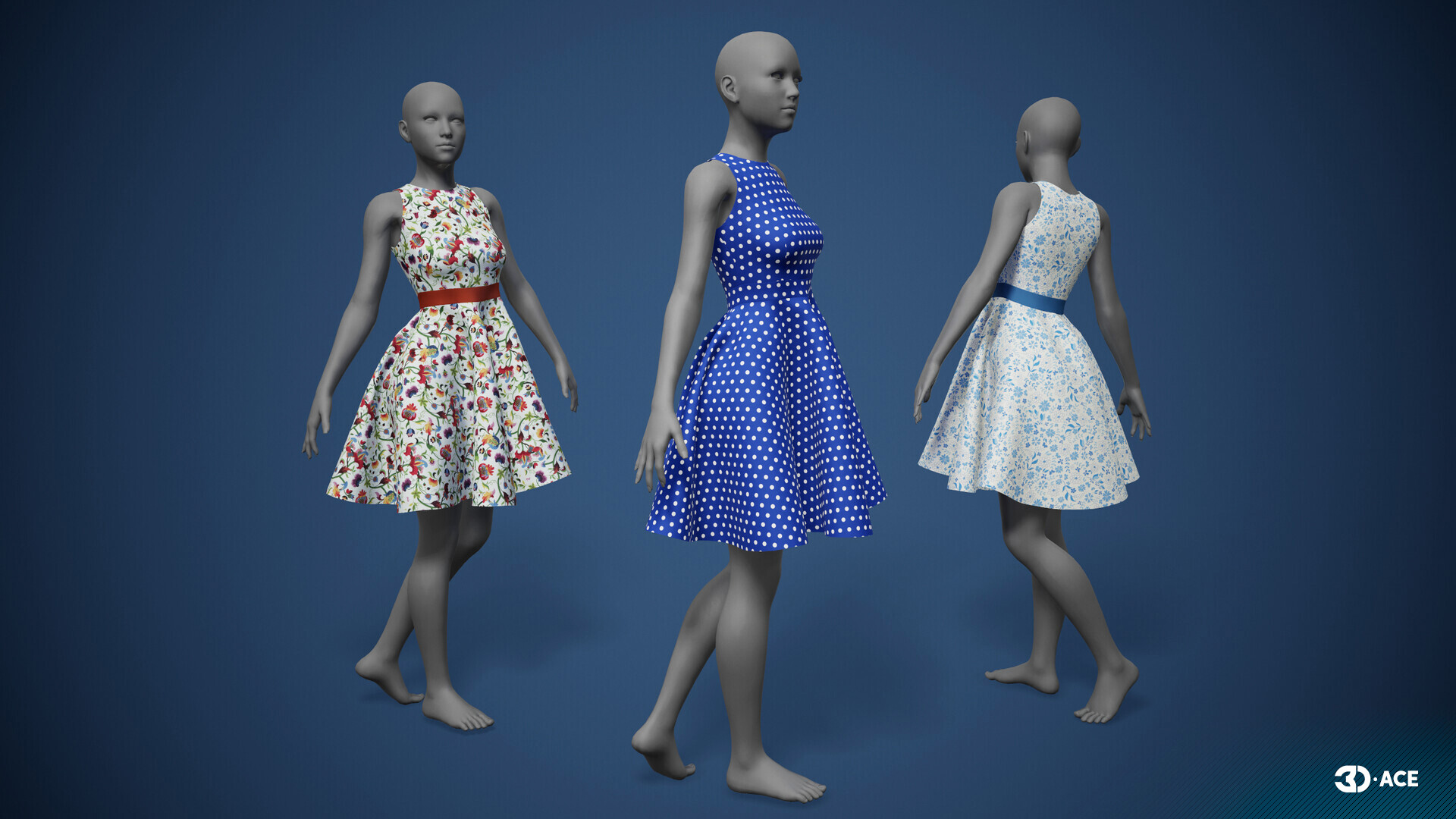
Blending 3D models, especially when considering 3D modeling for AR/VR, within your presentations demands aesthetics and technical precision. This segment guides you on how to integrate 3D models of clothing into your business presentations seamlessly.
Compatibility and File Formats
For a seamless integration of 3D clothing models into business presentations, understanding the appropriate file formats becomes crucial. Popular software like PowerPoint, Keynote, or Google Slides might require conversion tools if the 3D model is in an unconventional format. Commonly accepted formats include OBJ, FBX, and STL.
Before selecting a 3D model, ensure it supports the intended presentation platform. Some platforms might even support interactive 3D viewing, allowing the audience to rotate and inspect the model. Therefore, always double-check the specifications of your chosen software and match them with the 3D model’s file type.
Animation and Interaction
Engaging an audience often hinges on dynamic content. By animating 3D clothing models, you can showcase various perspectives, highlight features, or demonstrate functionality in real time. Modern presentation tools offer built-in options for incorporating animated sequences, making your content visually compelling.
Interaction is another dimension to consider. Offering viewers the capability to manipulate, rotate, or zoom into a 3D model fosters active engagement. Ensure that your chosen 3D models have rigged components if you aim for detailed animations. Also, take advantage of plugins or extensions that can elevate user interactivity, transforming your presentation from a passive experience to an immersive one.
Presenting with Confidence
When using 3D clothing models, your degree of confidence may have a significant influence on how the audience reacts. To begin, become intimately acquainted with the model’s features and functions. Practice moving through the model, maintaining seamless transitions, and emphasizing essential elements.
Choose a clean, clutter-free design that will allow the 3D model to shine out. Prepare backup plans, such as offline copies or alternate graphics, in case of technological difficulties. Engage your audience by asking questions and soliciting input. By mastering the technical and aesthetic parts of your presentation, paired with a well-rehearsed delivery, you position yourself as an authoritative and compelling presenter.
Outsourcing vs. Creating In-House

Several factors influence the decision between outsourcing and in-house production of 3D models. Budget limits, team skill availability, project deadline, and desired amount of model modification all play essential roles. While outsourcing may provide skilled artistry and quick delivery, in-house development provides direct control and customized results. Each solution has advantages and disadvantages, so firms should carefully consider their priorities and resources.
Assessing Your Needs and Capabilities
- Budget considerations. Determine how much you are willing to allocate for 3D modeling. Outsourcing might demand higher costs but often guarantees professional results.
- Technical expertise. Assess the skills present within your team. Do you have experts who can create or manipulate 3D models, or will training be necessary?
- Project timeline. Understand your deadline constraints. In-house creation may require a longer timeframe, especially if new skills are being learned.
- Model complexity. Decide on the intricacy desired. Complex designs necessitate specialized skills or advanced software.
- Feedback loops. Consider how often you’ll want to make revisions. In-house teams may provide faster turnarounds for modifications.
Cost Considerations
- Software licensing. Evaluate the expenses of procuring or renewing 3D modeling software, especially if considering in-house creation.
- Training expenses. If your team needs proficiency, account for the costs associated with upskilling or attending workshops.
- Maintenance costs. Ongoing software updates and potential hardware upgrades can add to the overall expenditure.
- Outsourcing fees. Recognize that professionals might charge per project or hourly. Ensure clear communication to avoid unforeseen expenses.
- Revision costs. Changes to models, especially when outsourced, can attract additional charges. Always clarify the scope and potential fees for modifications.
- Asset storage. High-quality 3D models consume considerable storage space. Consider the costs of expanding digital storage or cloud solutions.
Quality and Customization
- Detail and resolution. Determine the amount of detail needed. High-resolution models appear more lifelike, but they consume more resources.
- Flexibility. Find out whether the model must be readily adjusted or converted for other presentations or platforms.
- Authenticity. Consider the significance of a model’s accuracy in reflecting real-world goods, particularly for firms that place a premium on product realism.
- Unique specifications. Discover any distinctive features or nuances that must be included, particularly if they are unique to your brand or product.
- Interactivity. Get to know the ideal degree of user involvement. Some models provide rotation, zoom, and other user-defined operations.
- Integration of feedback. Learn how open the creation process should be to modifications depending on input from the team or the customer.
Case Studies and Success Stories
Real-world examples often provide insightful learning, showcasing the practical applications and benefits of 3D modeling in business presentations. These narratives offer valuable lessons, demonstrating effective strategies and potential pitfalls to avoid.
Sri Lankan Footwear Label Norlanka’s 3D Revolution
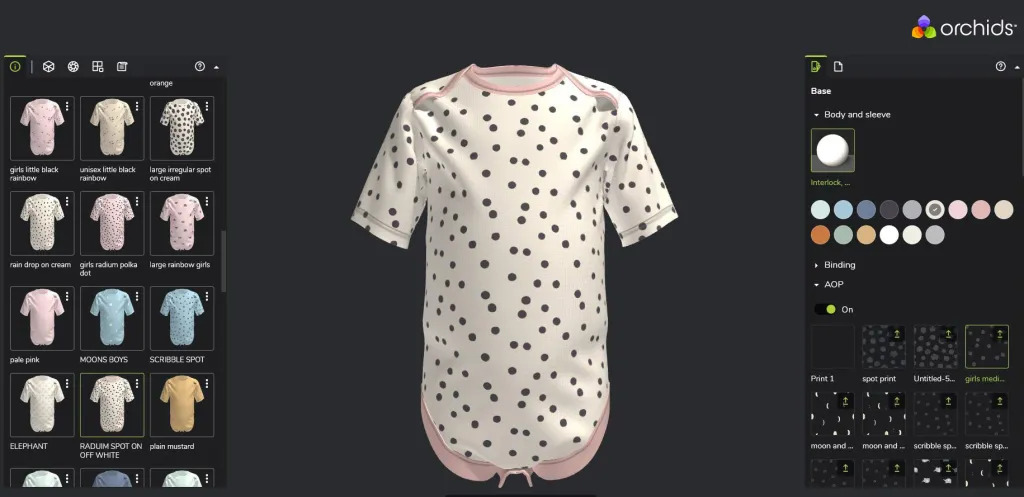
Norlanka, a Sri Lankan footwear manufacturer, stands out as a testament to the revolutionary potential of 3D technology in the fast-expanding fashion sector. Norlanka has pioneered using 3D fashion design software, replacing conventional dependence on physical samples since 2018. This foresight was instrumental during the pandemic, which coincided with an increase in internet buying.
Norlanka used 3D models to easily display their creative concepts to a worldwide audience with a single click, removing geographical and logistical constraints. This not only cut their operational expenses but also increased their market reach, providing them with a considerable competitive advantage.
Norlanka has shown how modern technologies may redefine established techniques, making operations more efficient, cost-effective, and in tune with current market expectations by smoothly incorporating 3D technology into their business model.
PlatformE’s Transition to 3D Design
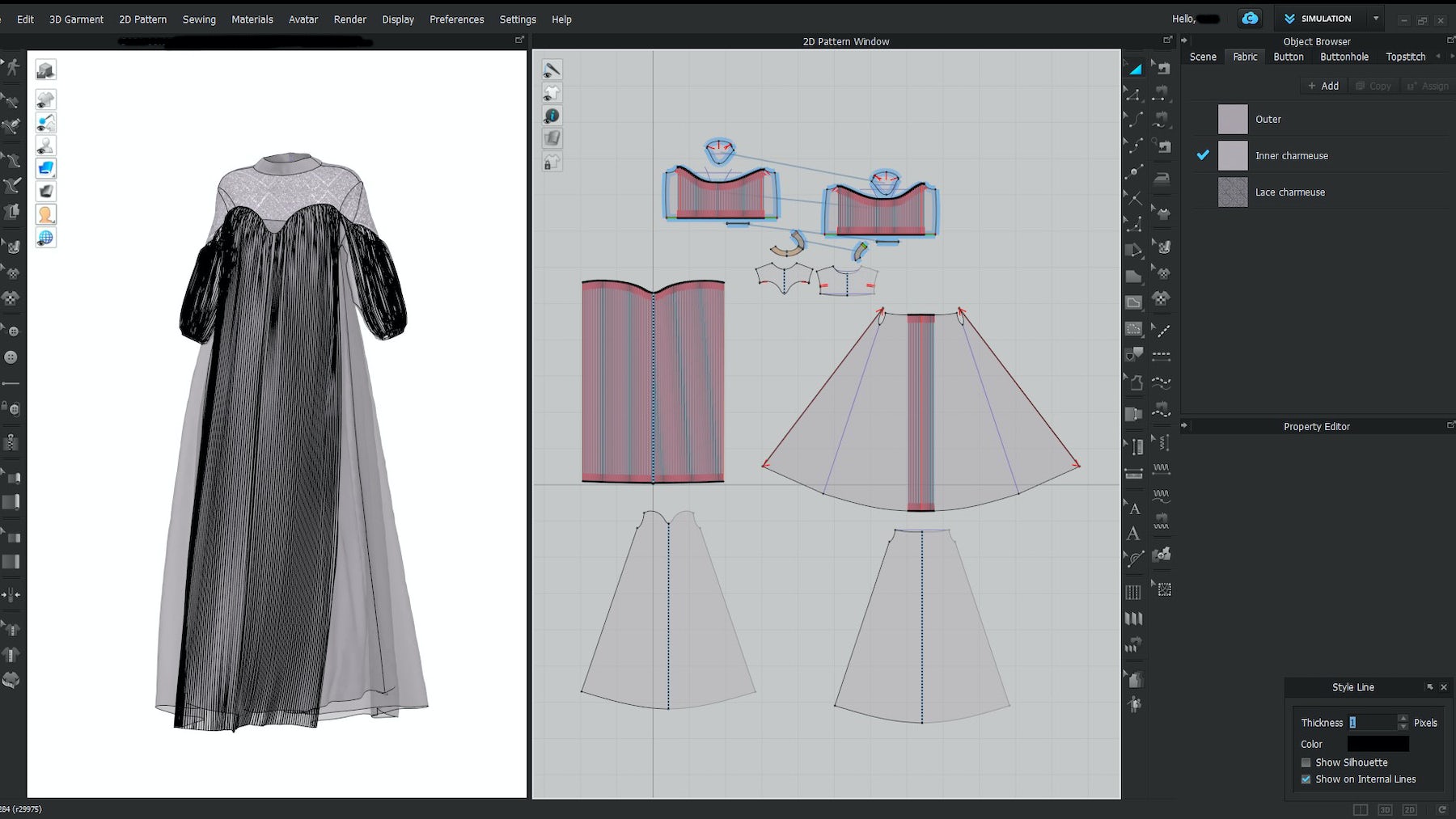
In 2015, fashion brand manager Ben Demiri, industrial engineer Goncalo Cruz, and Farfetch CEO José Neves co-founded PlatformE. Initially, the business aimed to facilitate brands in implementing made-to-order production. They developed software that enabled customers to personalize products online using photorealistic 3D models, which were then produced post-order. This innovative approach garnered attention from renowned brands like Fendi, Dior, and Sergio Rossi.
However, as the founders collaborated with brands, they identified a broader potential for 3D tools in digital design. This realization led to the birth of Ddigitt, a consultancy and 3D product creation studio dedicated to assisting fashion brands in transitioning to 3D design. Notably, Kering, the parent company of luxury brands like Gucci, Balenciaga, and Alexander McQueen, became one of the first companies to collaborate with Ddigitt, highlighting the growing significance of 3D design in the fashion industry.
Let 3D-Ace Become Your Guide
3D-Ace is your ideal partner in the world of 3D design. As an experienced art outsourcing studio, we bring years of expertise, ensuring precision and creativity in every project. Our commitment to excellence has set us apart, making us the preferred choice for brands aiming for top-tier 3D visuals.
Don’t compromise on quality. For a seamless transition into the 3D era and to elevate your brand’s visual appeal, contact us at 3D-Ace. We are here to help you embrace digital transformation in the most efficient way possible!

